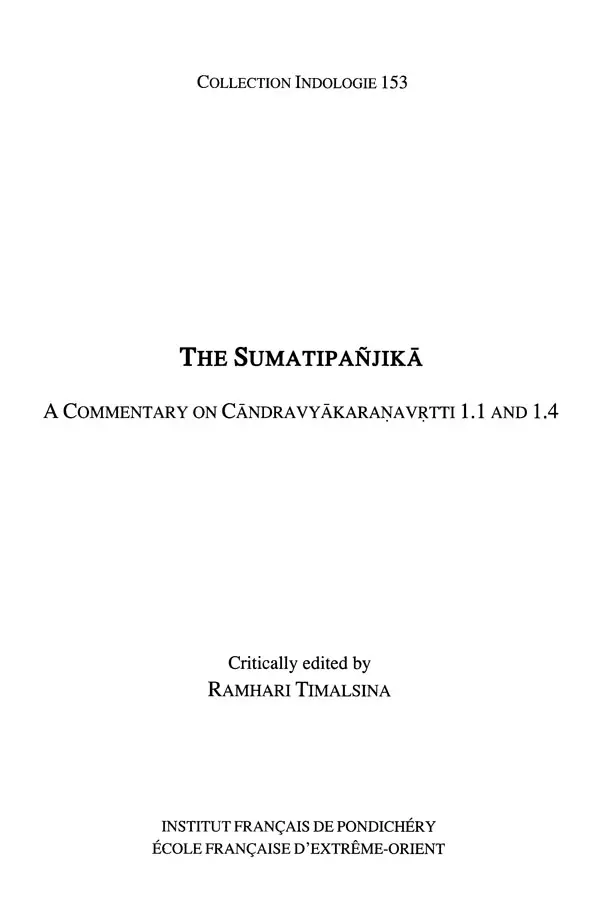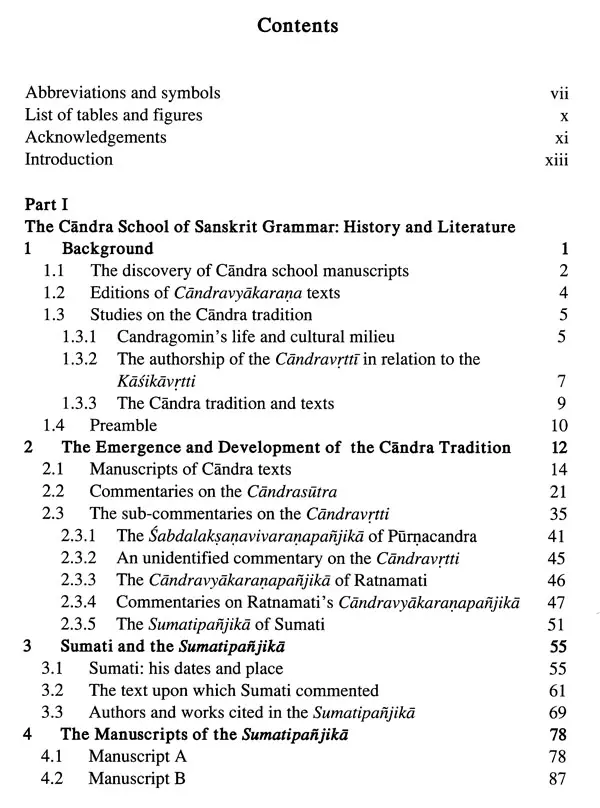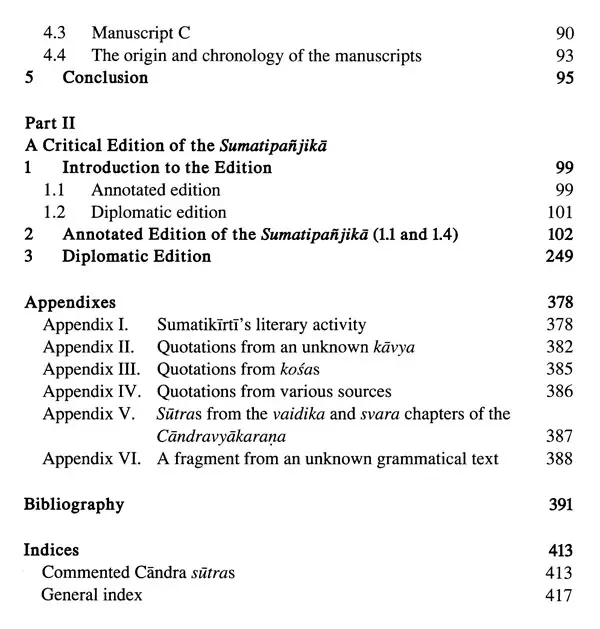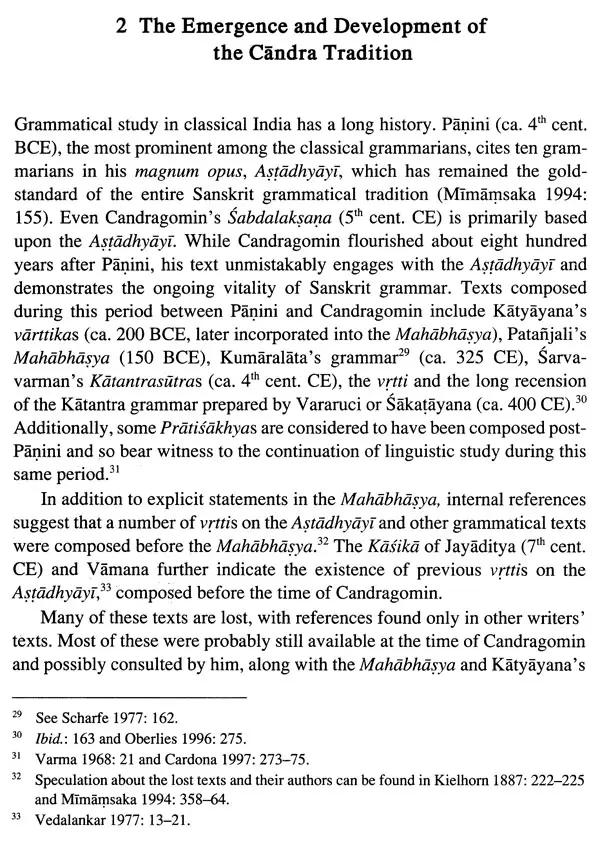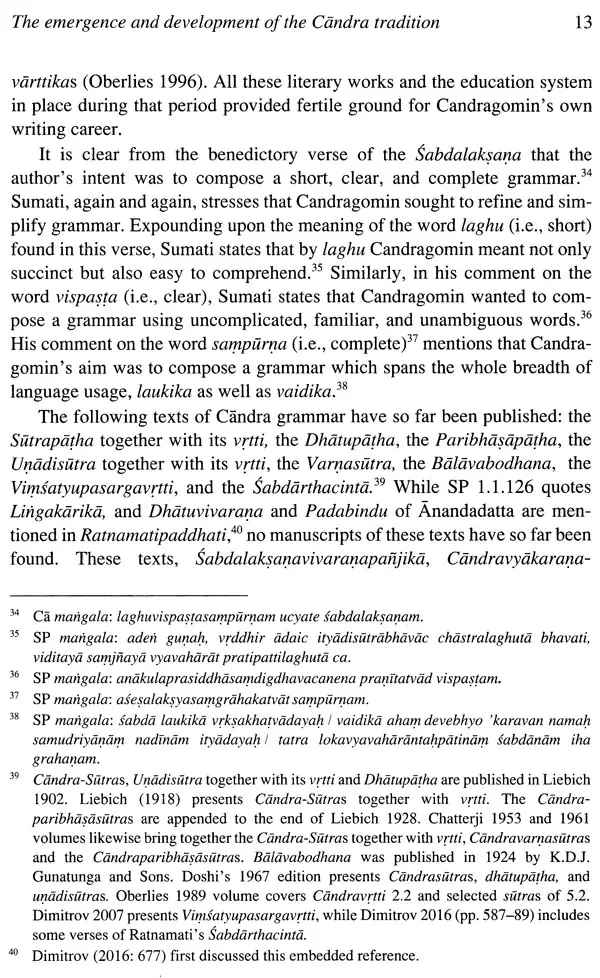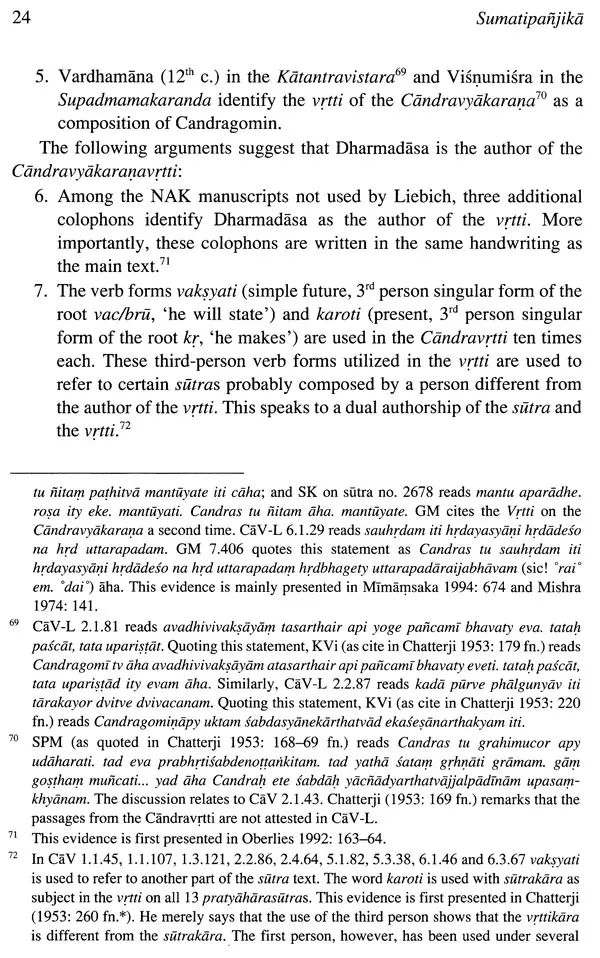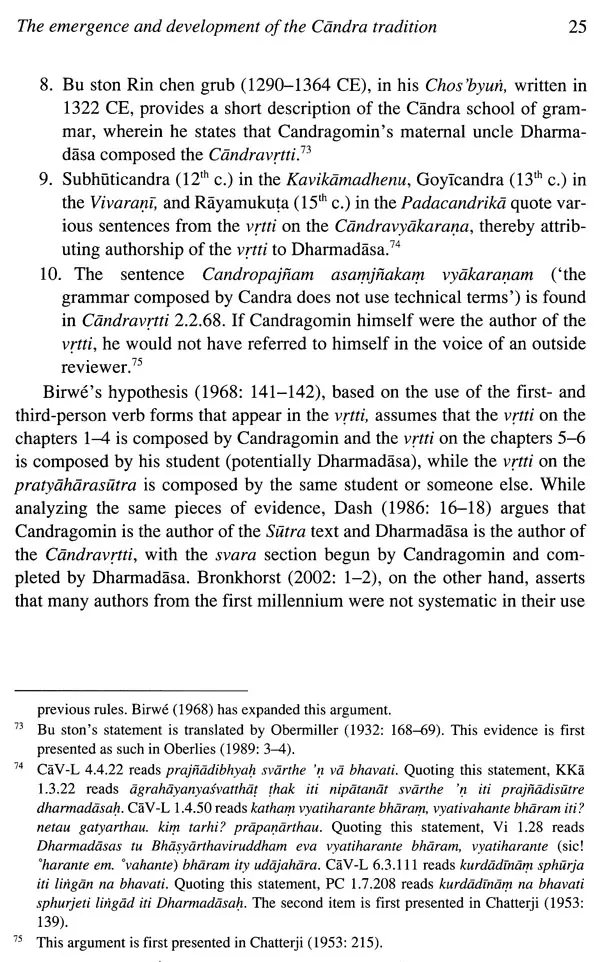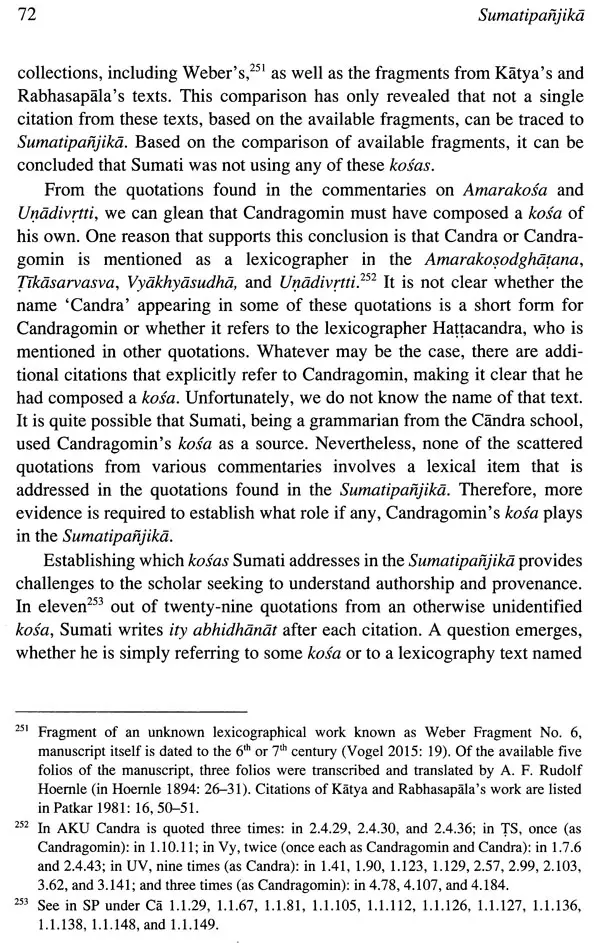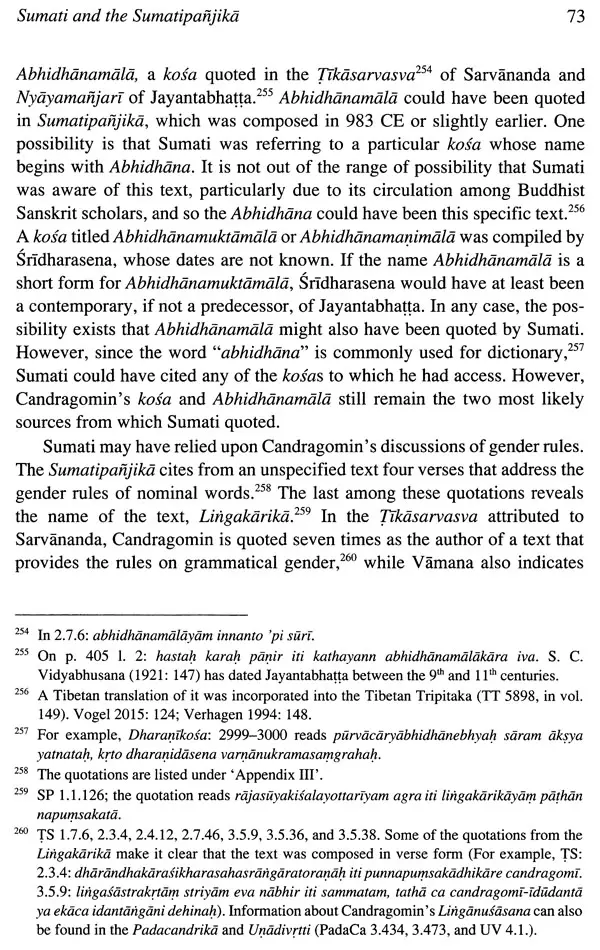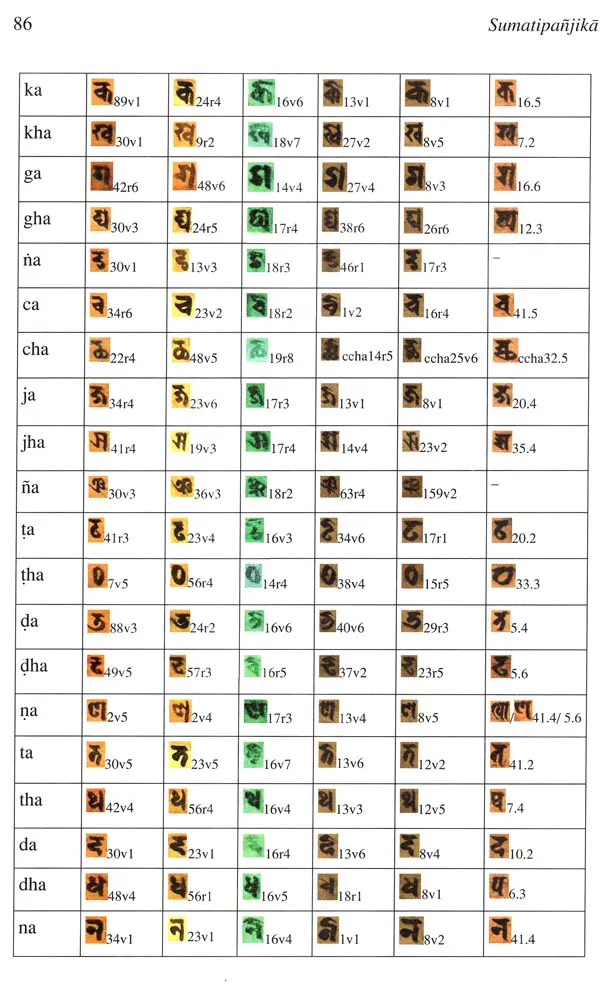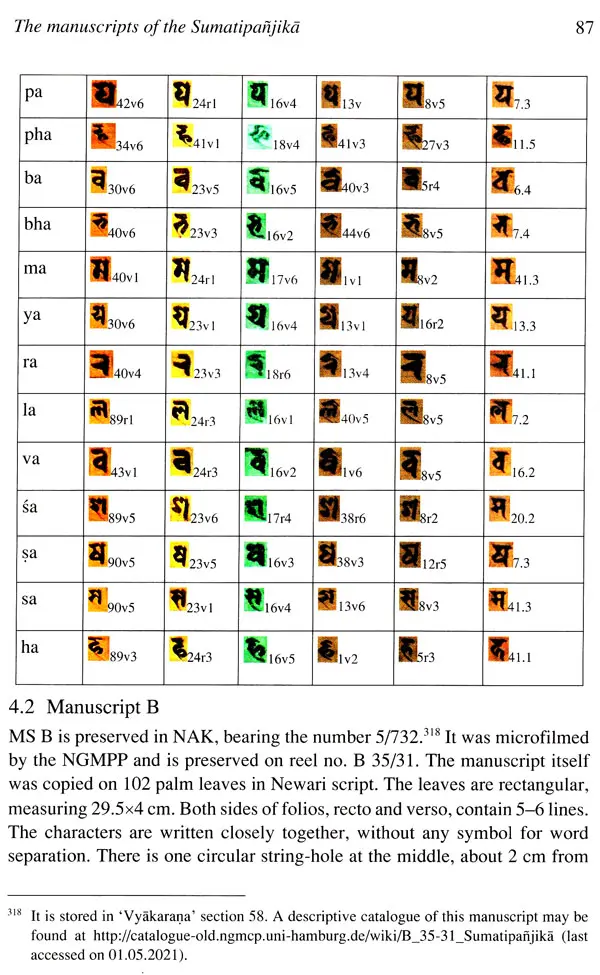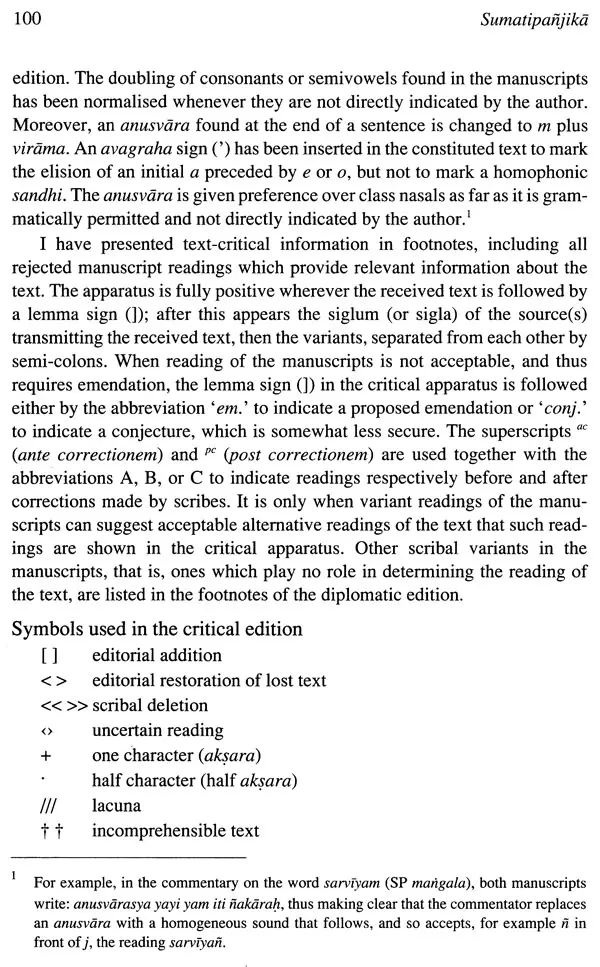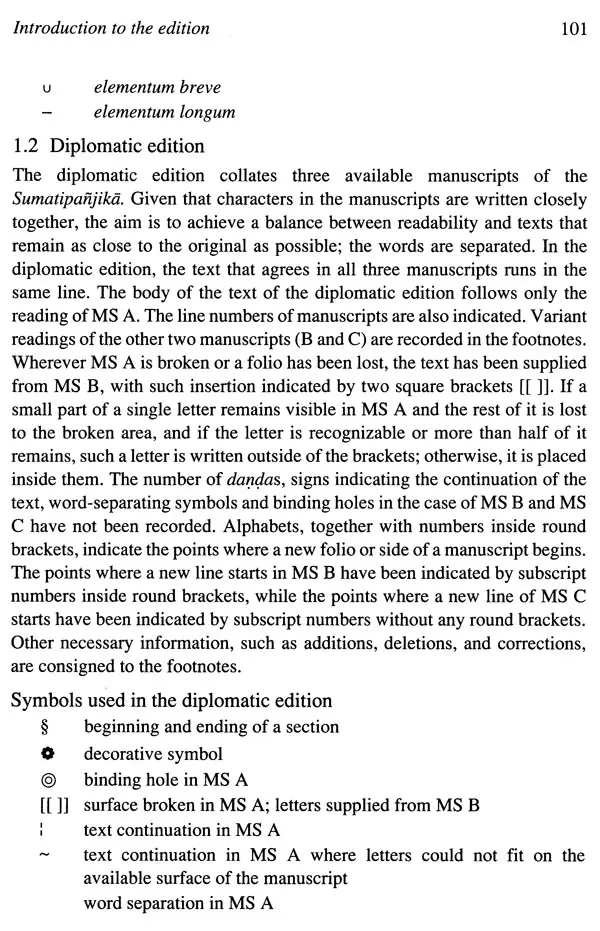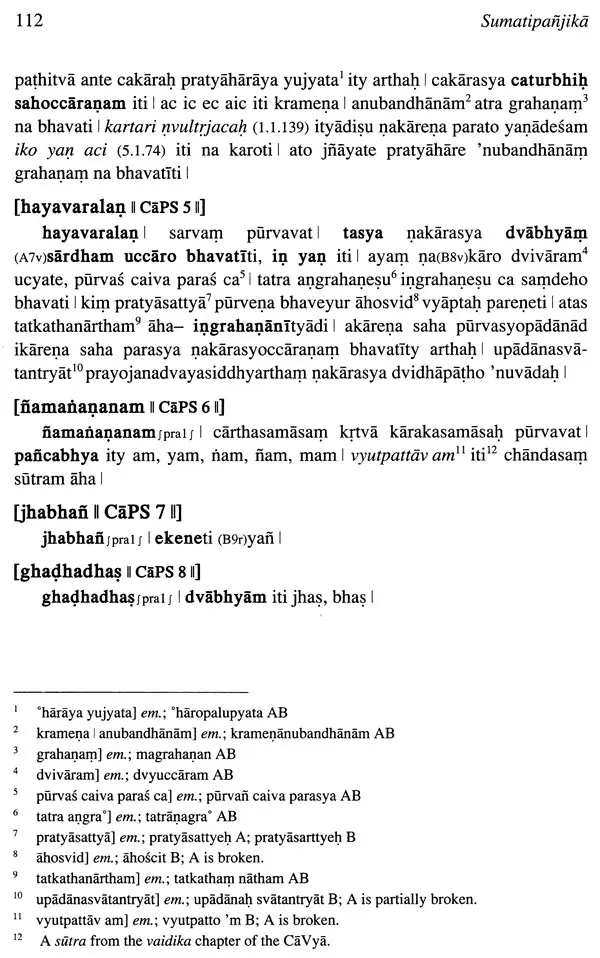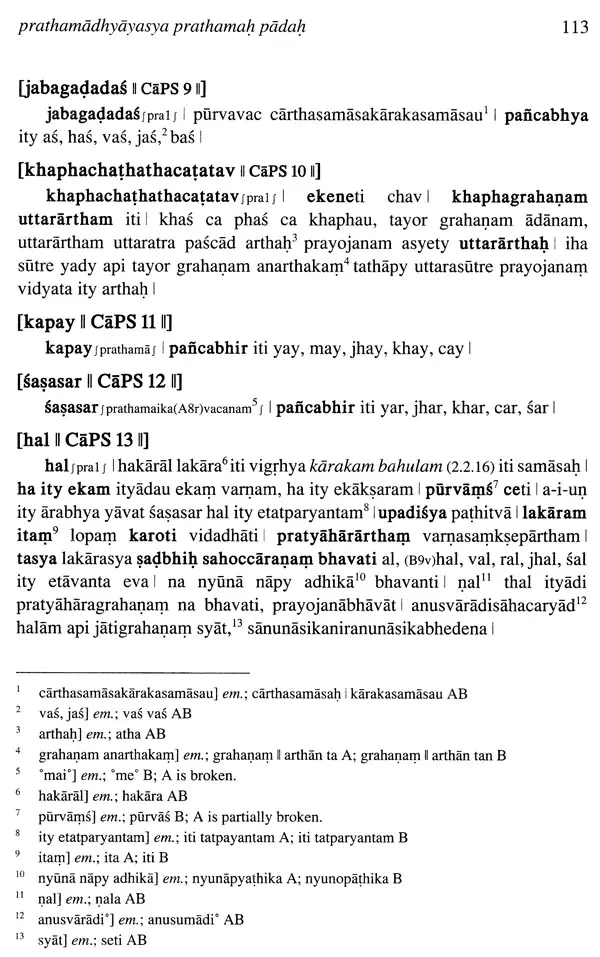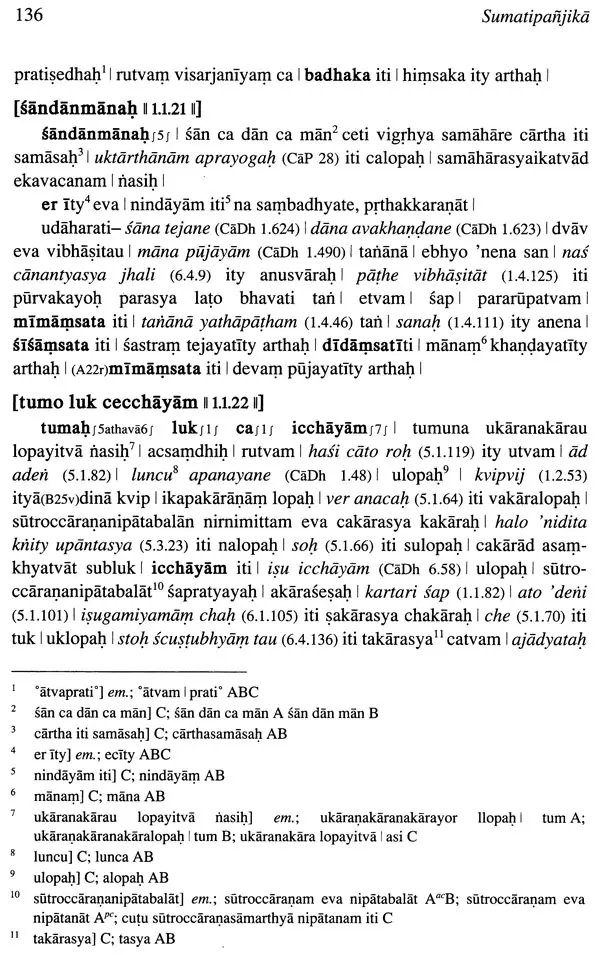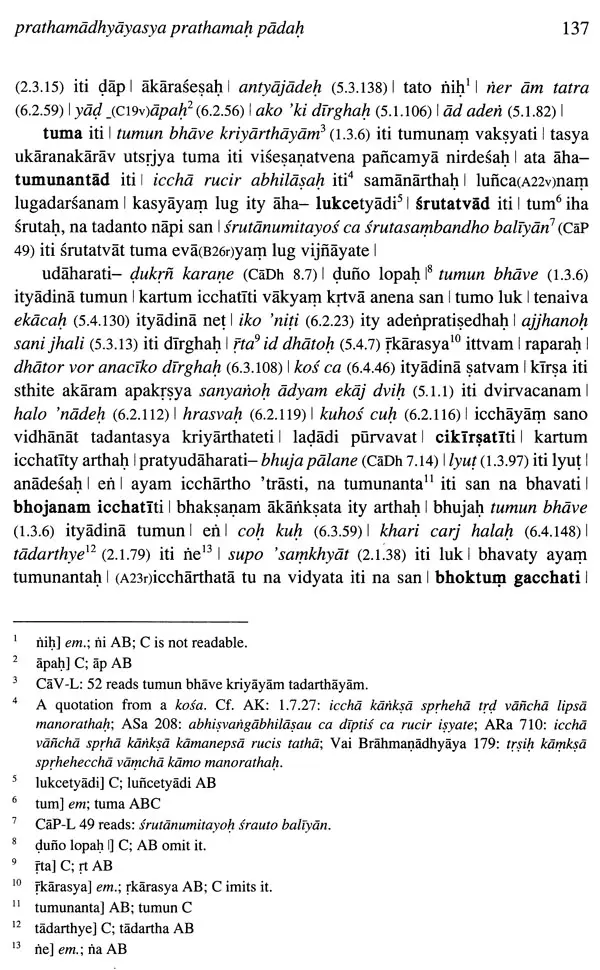
The Sumatipanjika - A Commentary on Candravyakaranavrtti 1.1 and 1.4
Book Specification
| Item Code: | UAY235 |
| Author: | Ramhari Timalsina |
| Publisher: | Institut Francais De Pondichery |
| Language: | English |
| Edition: | 2022 |
| ISBN: | 9788184702453 |
| Pages: | 444 |
| Cover: | PAPERBACK |
| Other Details | 9.50 X 6.50 inch |
| Weight | 810 gm |
Book Description
The history of Sanskrit grammar has largely been dominated by the work of Panini and his followers, while the history and contributions of other Sanskrit grammatical schools remain under their shadow and are little known. The present work, a first critical edition of two extracts from the Sumatipanjika (1.1 and 1.4), a commentary by the Buddhist author Sumati (10 cent.) on the grammatical work of Candragomin, founder of the eponymous Candra school of grammar, goes some way to filling in this gap. The text, presented in a critical edition followed by a diplomatic one, is based on three manuscripts (two from Nepal and one from Bengal) dating from between the 15" and 16" centuries and written in Newari script. The edition is prefaced by an introduction that discusses the history of the Candra school of Sanskrit grammar and considers how Candra grammar was kept alive in the regions of Nepal and Tibet, in dialogue with the Paninian school.
L'histoire de la tradition grammaticale sanskrite a jusqu'a present ete largement dominee par les travaux sur l’oeuvre de Panini et de ses disciples. A l'inverse, les contributions des autres ecoles grammaticales sanskrites restent relativement peu connues, alors qu'elles ne sont pas moins riches et interessantes. Le present ouvrage contribue a combler cette lacune en livrant une premiere edition critique de deux extraits de la Sumatipanjika (1.1 et 1.4), un commentaire du x'siecle de notre ere sur la grammaire sanskrite de Candragomin, le fondateur de l'ecole eponyme candra, par un auteur bouddhiste du nom de Sumati. L'edition, presentee sous forme d'une edition critique suivie d'une edition diplomatique, est basee sur trois manuscrits (deux du Nepal et un du Bengale) datant des XV' et XVI siecles et copies en ecriture Newari. L'edition proprement dite est precedee d'une introduction qui traite de l'histoire de l'ecole candra de grammaire sanskrite et examine, entre autres choses, la maniere dont cette tradition a ete maintenue vivante dans les regions du Nepal et du Tibet, en dialogue constant avec l'ecole panineenne.
Ramhari Timalsina has taught linguistics at Tribhuvan University (2004-2008) and Sanskrit grammar at Mahendra Sanskrit University (2009- 2014). In 2014, after working as a researcher in the Nepalese-German Manuscript Cataloguing Project (NGMCP) for a dozen years, he enrolled at Gottingen University for doctoral studies. Since 2018, he has been working at the Heidelberg Academy of Sciences and Humanities as a research associate.
Rambari Timalsina a enseigne la linguistique a l'Universite nepalaise Tribhuvan (2004-2008) et la grammaire sanskrite a la Mahendra Sanskrit University (2009-2014), egalement au Nepal. En 2014, apres avoir travaille comme chercheur au sein du Nepalese-German Manuscript Cataloguing Project (NGMCP) pendant une douzaine d'annees, il s'est inscrit a l'universite de Gottingen pour y suivre des etudes doctorales. Depuis 2018, il travaille a l'Academie des Sciences et des Lettres de Heidelberg en tant que chercheur associe.
Sanskrit is more than just a language and literature. It represents an entire civilization. Even though Sanskrit studies are no longer mainstream, digital libraries and archives are repositories of its untold wealth, with millions of folios of Sanskrit-related materials. This work is an attempt to excavate a particular school of Sanskrit grammar, namely the Candra tradition, started by Candragomin in the fifth century. This work is also an adventure for me, as I was trained in the Paninian school of Sanskrit grammar, and after teaching for decades in Sanskrit school and college, I felt the need to explore other grammar schools and their role in universalizing Sanskrit in classical India. To do so, I needed to educate myself on philological methods, and thus pursued my Ph.D. in Germany. It may not be an exaggeration to say that philological research is one of the most painstaking and least rewarding tasks. Any reader who ventures into this book must have some affinity with this discipline, and I thank you for making the choices that have brought you here.
While I began reading Panini in a family environment in childhood, my engagement with the Candra school for a decade is relatively short. Yet it is only upon comparing Panini with Candragomin that I have been able to truly fathom Panini's genius. At the same time, this has allowed me to explore alternative ways of solving the same grammatical issues, and the merits and flaws in altering some of the rules that have been outlined by Panini. In this sense, even when I am reading Candra grammar, I am still thinking within the framework of Panini, comparing and contrasting the salient features. It is in studying Candra's grammar that I have a very immediate, critical under- standing of Panini's genius, as this study has allowed me to engage, not only the commonly lauded grammar rules but also the exceptions, particularities that are sometimes overshadowed by the popularity of the text. It is only when we compare these two traditions, that we can get a glimpse of the precision that Panini's grammar retains, and the number of potential flaws that have been noticed and critiqued by subsequent grammarians.
**Contents and Sample Pages**
